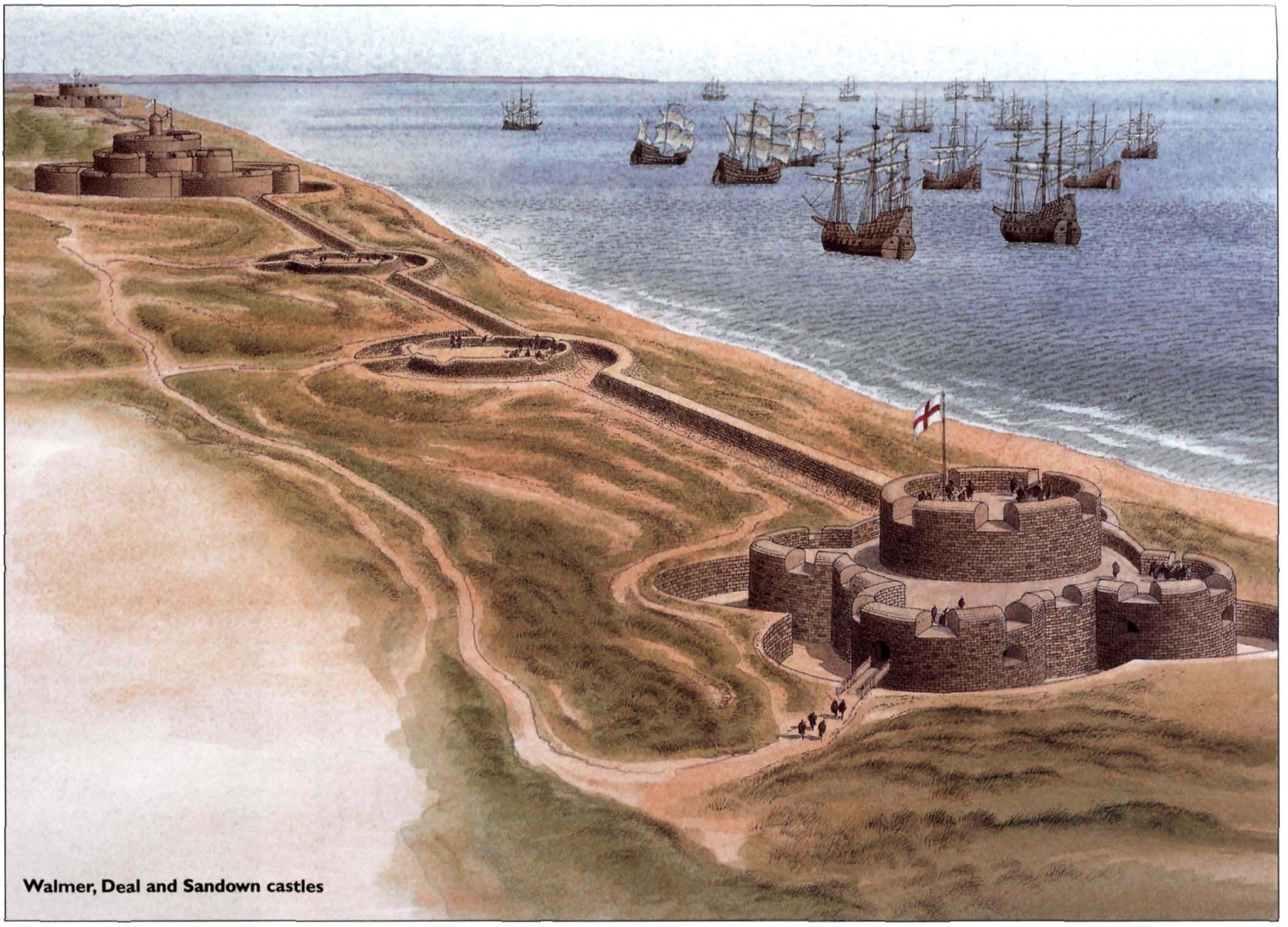
The location of the various castles and blockhouses constructed during
the fortification phases between 1539 and 1547.
Henry’s Artillery
Forts
The proliferation of gunpowder artillery inevitably forced
military engineers throughout Europe to rethink castle construction. In siege
after siege the fifteenth century had proved that the towering, flat-faced
masonry walls of early fortifications were hopelessly vulnerable to heavy guns.
These medieval structures, moreover, had been constructed without consideration
for the installation of heavy defensive guns.
Architects thus began re-engineering existing fortifications
by lowering and thickening their walls. Another measure-the addition of thick
earthen facings to the walls’ outer surfaces-also provided a cushioning layer
to lessen the impact of projectile strikes. The mounting of heavy defensive
cannons required the construction of reinforced embrasures both to accommodate
the guns themselves and to withstand the stresses of their weight and recoil.
On the Continent, sophisticated new “Italian Trace” forts built
specifically for artillery appeared and incorporated low, thick walls and
bastions to provide multiple angles of fire over carefully prepared approaches.
In addition, multileveled artillery towers, such as at Castelnaud in France,
also made their appearance at strategic locations throughout Europe. Such
towers employed the most advanced engineering principles of their day and were
all but impregnable to any but the most determined besieger.
The improvements in defensive works, in turn, ultimately
forced tacticians to devise new siege craft methods. The most effective method
to emerge incorporated the construction of angled approach trenches. These
ditches provided protection from the besieged castles ‘ guns and allowed the
gradual advancement of siege guns to within their most effective range.
Henry’s break with the Roman Catholic Church and subsequent
excommunication by Pope Paul II in 1538 set England on a collision course with
the powerful Catholic kingdoms of Europe. Almost overnight Henry found himself
facing a papal-backed coalition of France and Germany, and he began
preparations to fortify England’s coast in anticipation of invasion.
He subsequently ordered the construction of a string of
forts along England’s coast from Cornwall to Dover. Unlike the Italian Trace
forts common to the Continent, Henry’s “blockhouse” or
“bulwark” castles incorporated dry moats, interlocking defenses, low
profiles, and rounded, sloped ramparts to deflect artillery projectiles.
Possibly based on original designs by the famous German Renaissance figure
Albrecht Durer, Henry’s forts also featured numerous cannons in well-designed
embrasures with specially designed vents to carry away choking,
target-obscuring gun smoke. Although never tested in battle, such castles as
Deal and Walmar remain as testaments to Henry’s zeal in protecting his kingdom.